Why you can trust Tom's Hardware
Comparison Products
To better analyze the unique hardware configuration, we put the Team Group T-Force Cardea Zero Z340 up against the best SSDs on the market. Powered by Phison NVMe controllers just like the Cardea Zero Z340, we include the Seagate FireCuda 510 with Kioxia 64L TLC and the FireCuda 520 with Kioxia 96L TLC. Adata’s XPG SX8200 Pro and Kingston’s KC2500 both leverage Silicon Motion SM2262EN NVMe controllers, yet the Adata leverages Micron 64L TLC while the Kingston has Kioxia 96L TLC. We also threw in Samsung's 970 Evo Plus and WD’s Black SN750 as high-end competition as well as a WD Blue SN550, the Crucial MX500 SATA SSD, and a WD Black 7,200-RPM HDD for good measure.
Game Scene Loading - Final Fantasy XIV
Final Fantasy XIV Stormbringer free real-world game benchmark that easily and accurately compares game load times without the inaccuracy of using a stopwatch.
Team Group’s Cardea Zero Z340 offers up responsive game load time, with improved performance over the older hardware powering the Seagate FireCuda 510. It is only a fraction of a second slower than the WD Black and FireCuda 520, but the Kingston KC2500 and Adata XPG SX8200 Pro both deliver fastester game load performance. Both deliver over a second faster level loading performance and are closely trailed by the 970 EVO Plus.
Transfer Rates – DiskBench
We use the DiskBench storage benchmarking tool to test file transfer performance with our own custom blocks of data. Our 50GB data set includes 31,227 files of various types, like pictures, PDFs, and videos. Our 100GB includes 22,579 files with 50GB of them being large movies. We copy the data sets to new folders and then follow-up with a reading test of a newly written 6.5GB zip file and 15GB movie file.
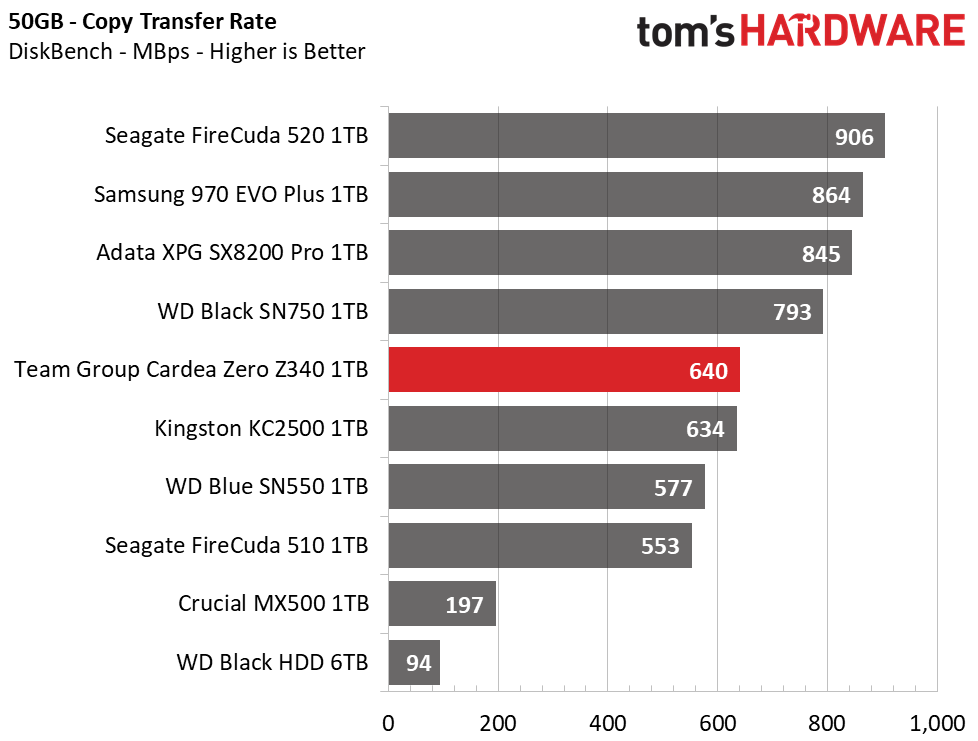
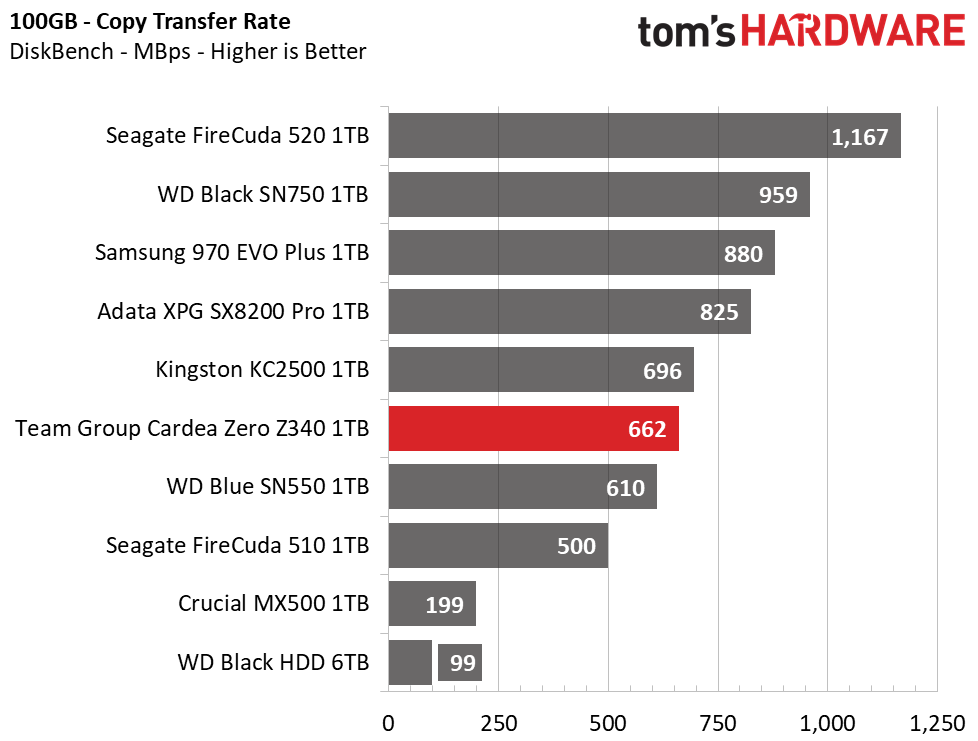
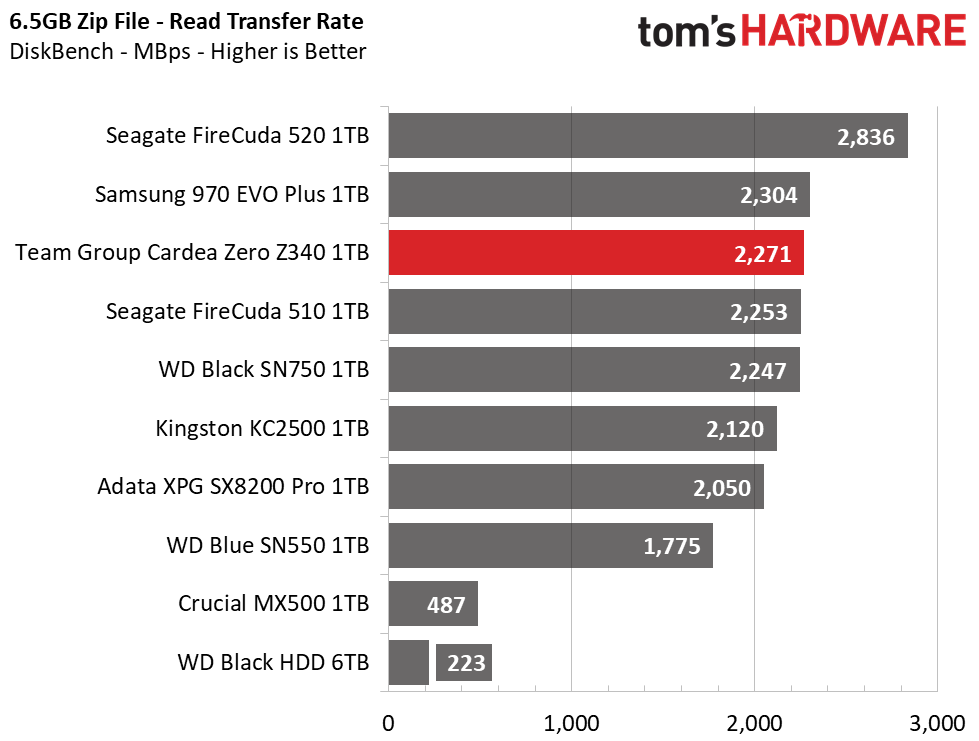

When copying, the Cardea trades blows with the Kingston KC2500 in our large file folder copy test. But with limited cache size, Team Group’s Cardea Zero Z340 isn’t able to keep up with the faster NVMe SSDs in the group. Overall, it still delivers respectable performance and we were pleased to see such strong read throughput from the E12S and Micron 96L 4-plane NAND. Together, this combo even managed second place on the 15GB movie read test.
Trace Testing – PCMark 10 Storage Tests
PCMark 10 is a trace-based benchmark that uses a wide-ranging set of real-world traces from popular applications and common tasks to measure the performance of storage devices. The quick benchmark is more relatable to those who use their PCs for leisure or basic office work, while the full benchmark relates more to power users.
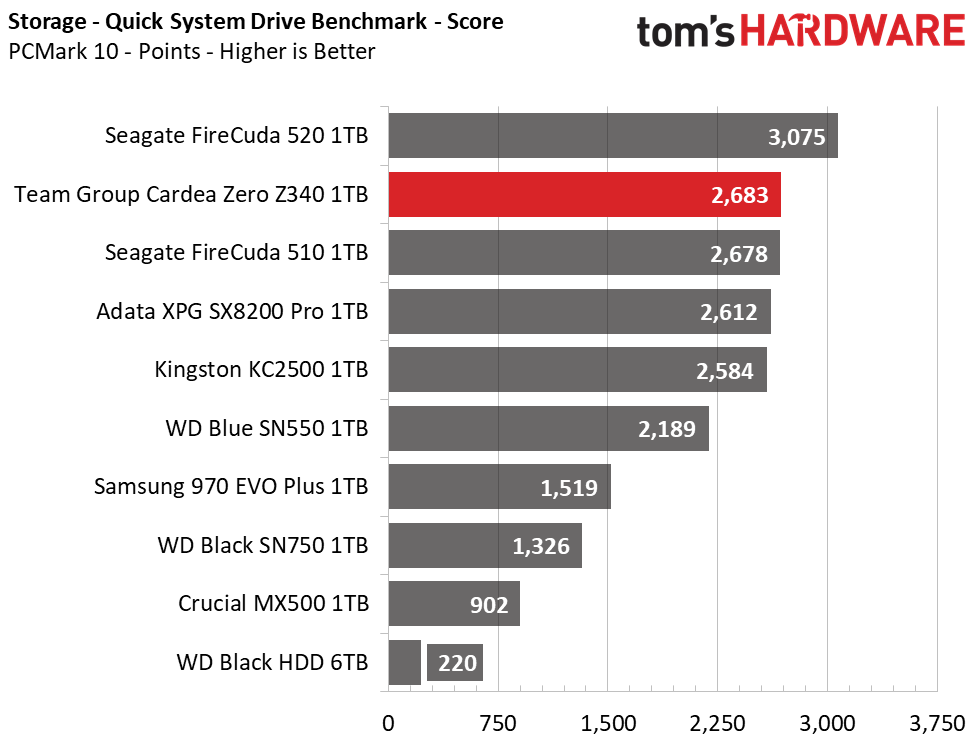

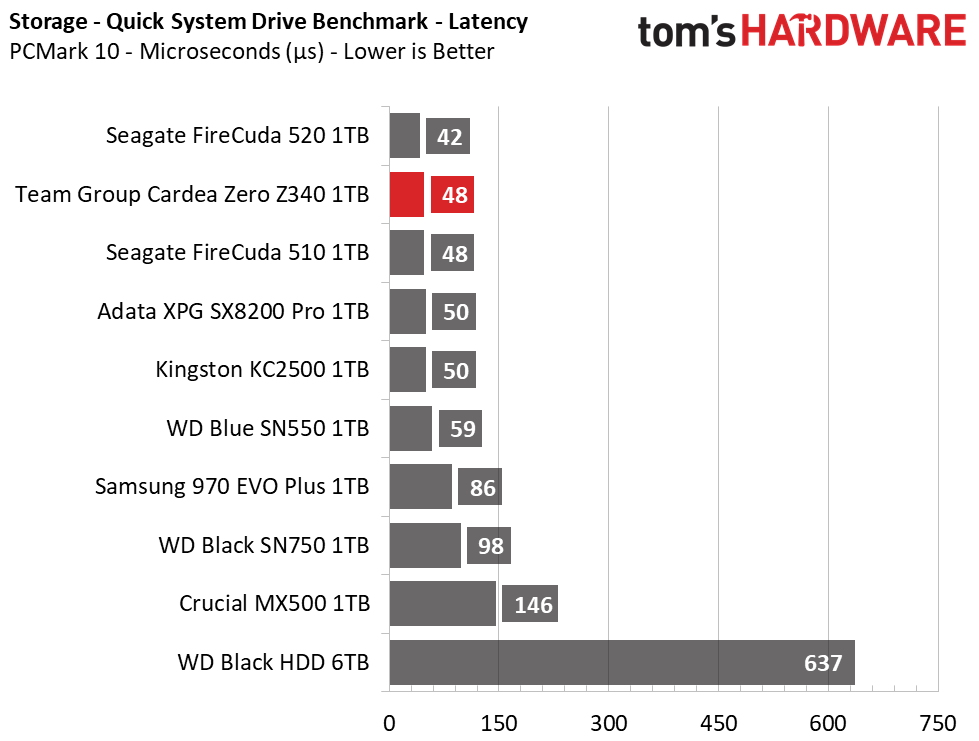
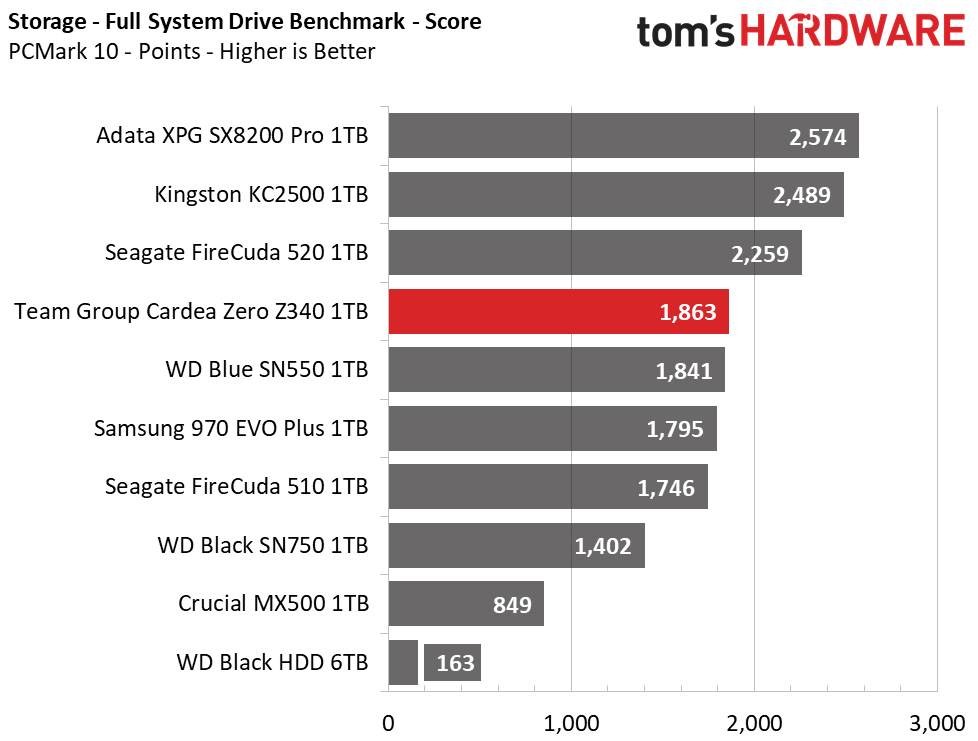
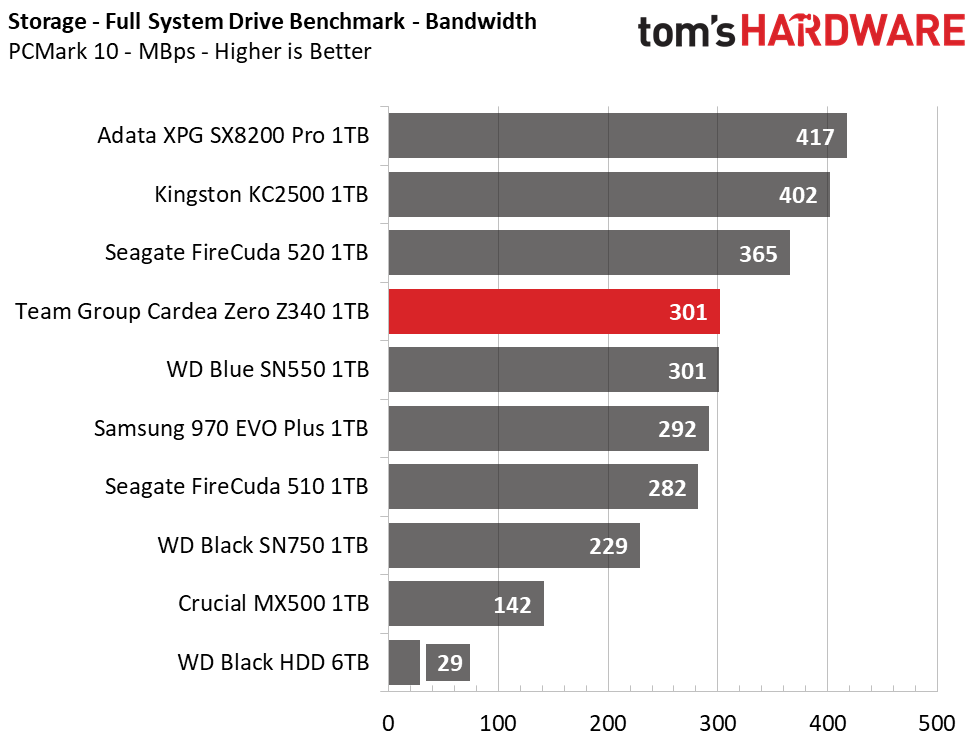

With a small and responsive SLC cache, in light workloads like those tested with the Quick System Drive Benchmark, the Cardea Zero Z340 is one of the fastest NVMe SSDs going. However, when hit with PCMark 10’s Full System Drive Benchmark, its performance landed it in fourth place, making way for drives with much larger dynamic SLC write caches that can sustain larger workloads at faster speeds.
Get Tom's Hardware's best news and in-depth reviews, straight to your inbox.
Trace Testing – SPECworkstation 3
Like PCMark 10, SPECworkstation 3 is a trace-based benchmark, but it is designed to push the system harder by measuring workstation performance in professional applications.
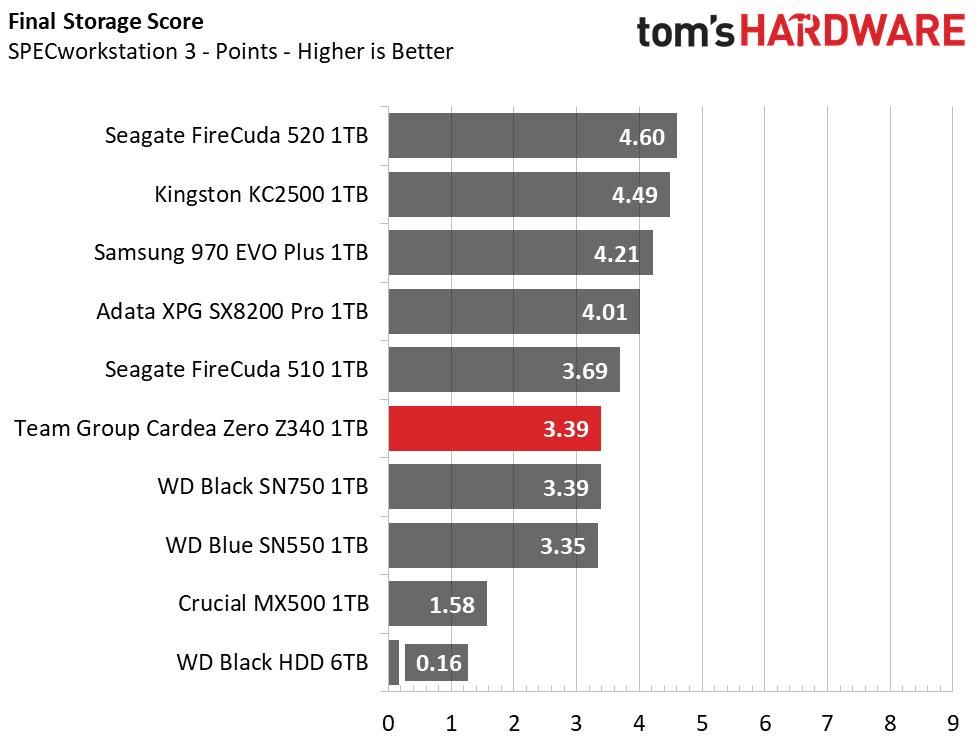
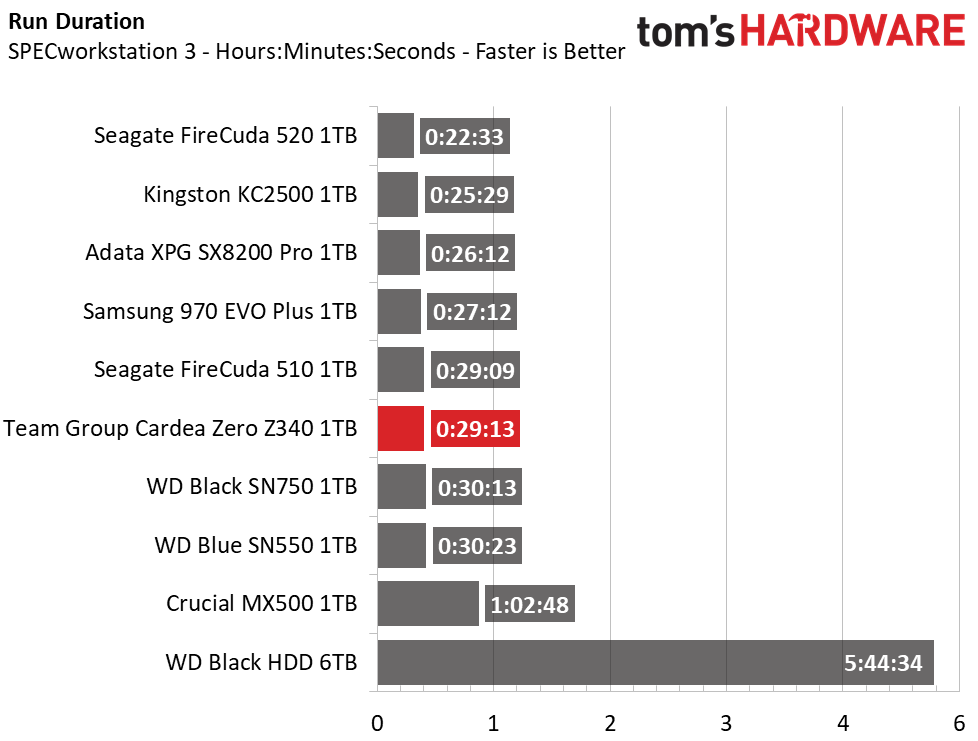
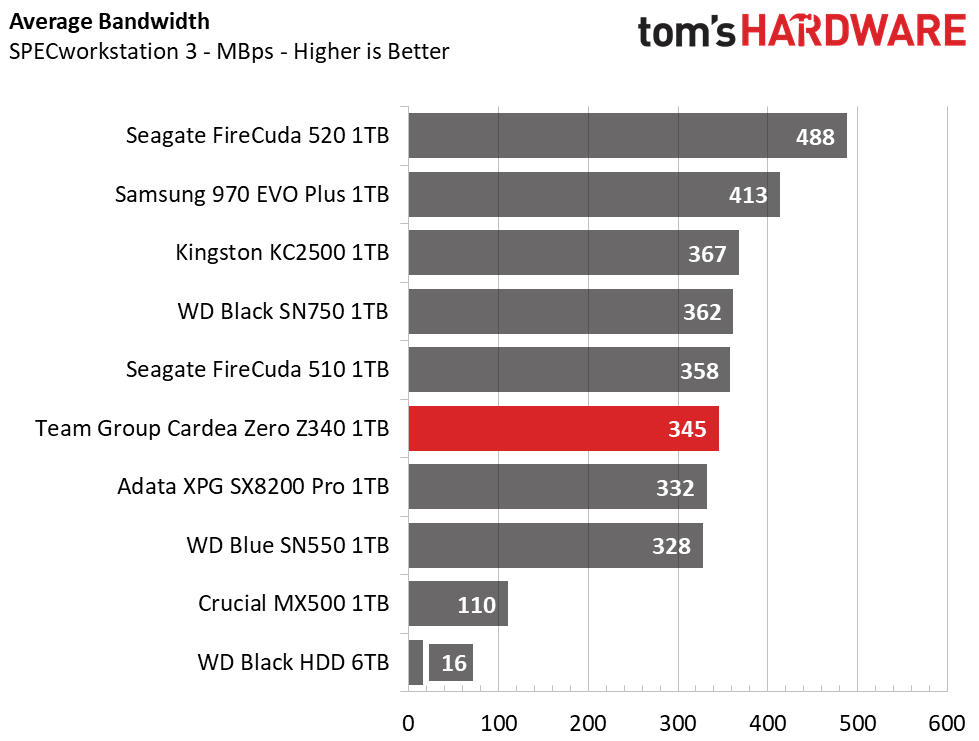
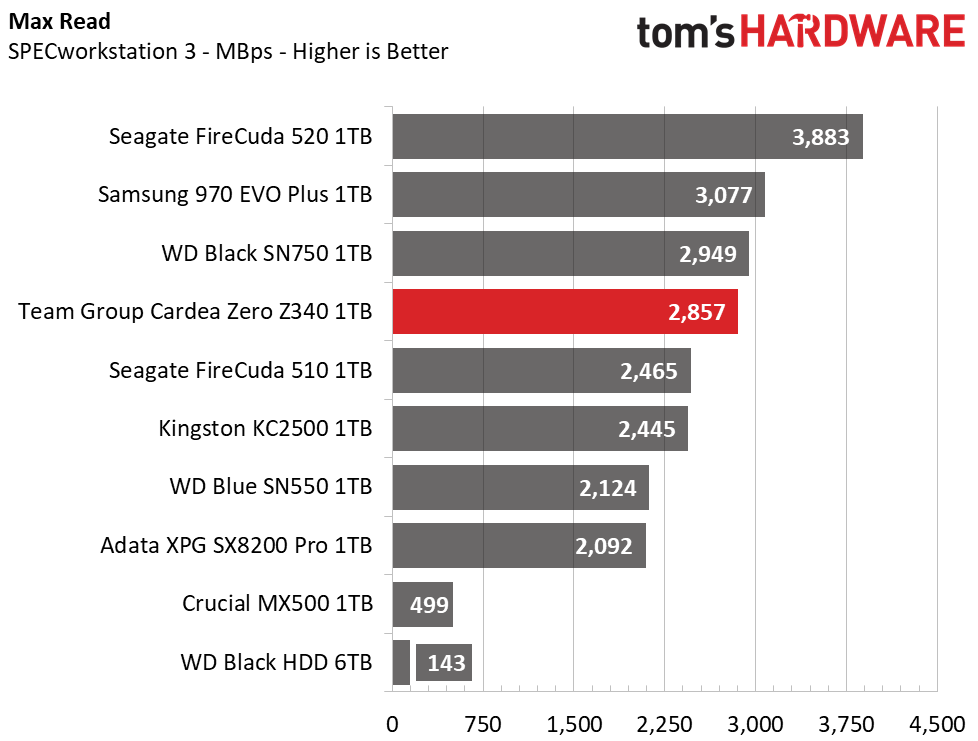
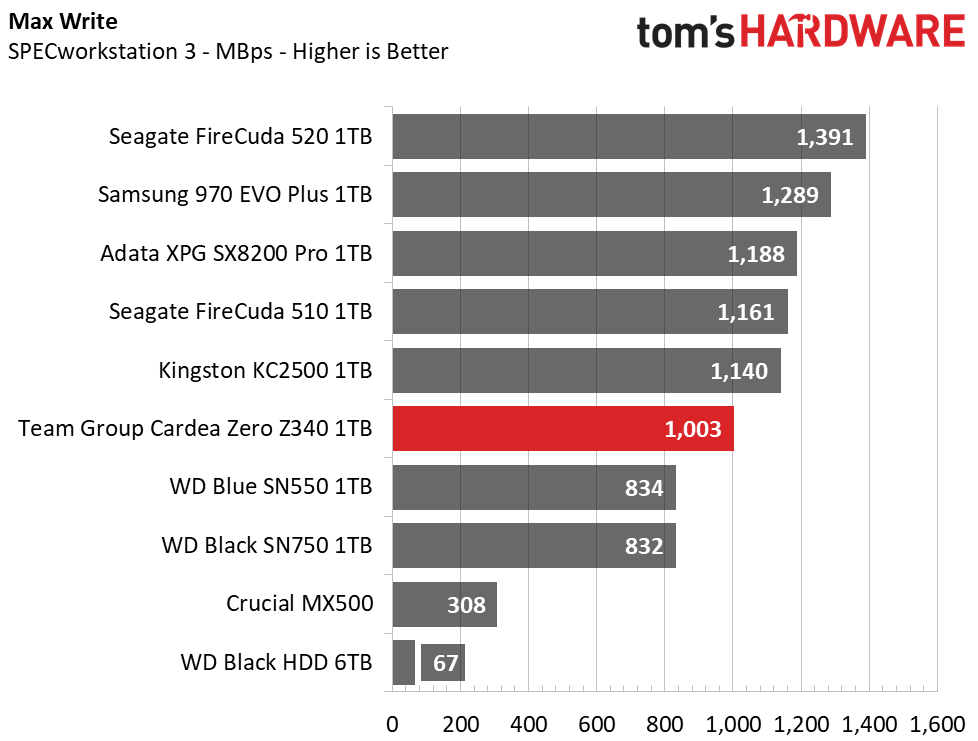
Even in heavier prosumer workloads, Team Group’s Cardea Zero Z340 is a decent performer, essentially tying the WD Black SN750 and FireCuda 510. However, it still took the Cardea Zero Z340 an additional three-to-four minutes to complete the test over the KC2500 and SX8200 Pro, with their more responsive SM2262EN controllers, and it trailed the Samsung 970 EVO Plus, too.
Synthetic Testing - ATTO / iometer
iometer is an advanced and highly configurable storage benchmarking tool while ATTO is a simple and free application that SSD vendors commonly use to assign sequential performance specifications to their products. Both of these tools give us insight into how the device handles different file sizes.

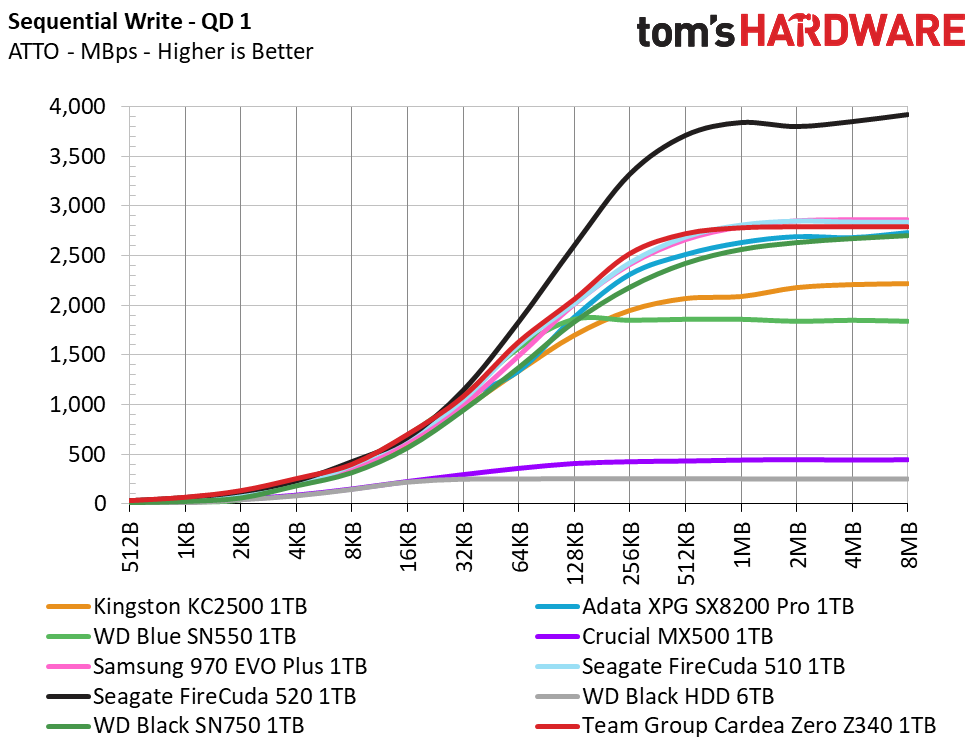

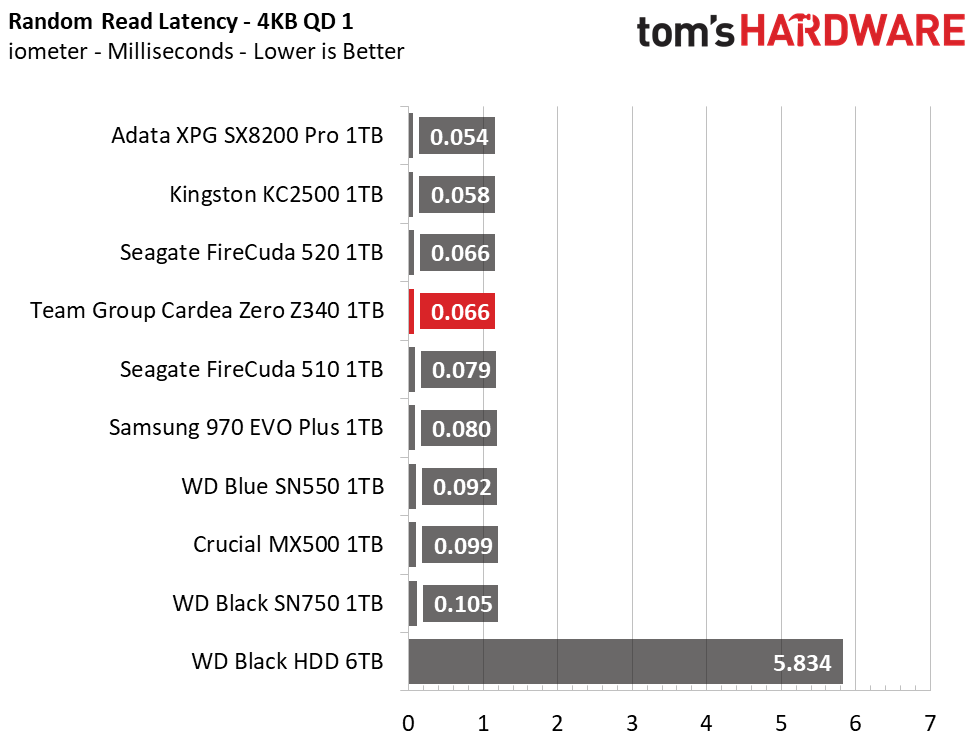


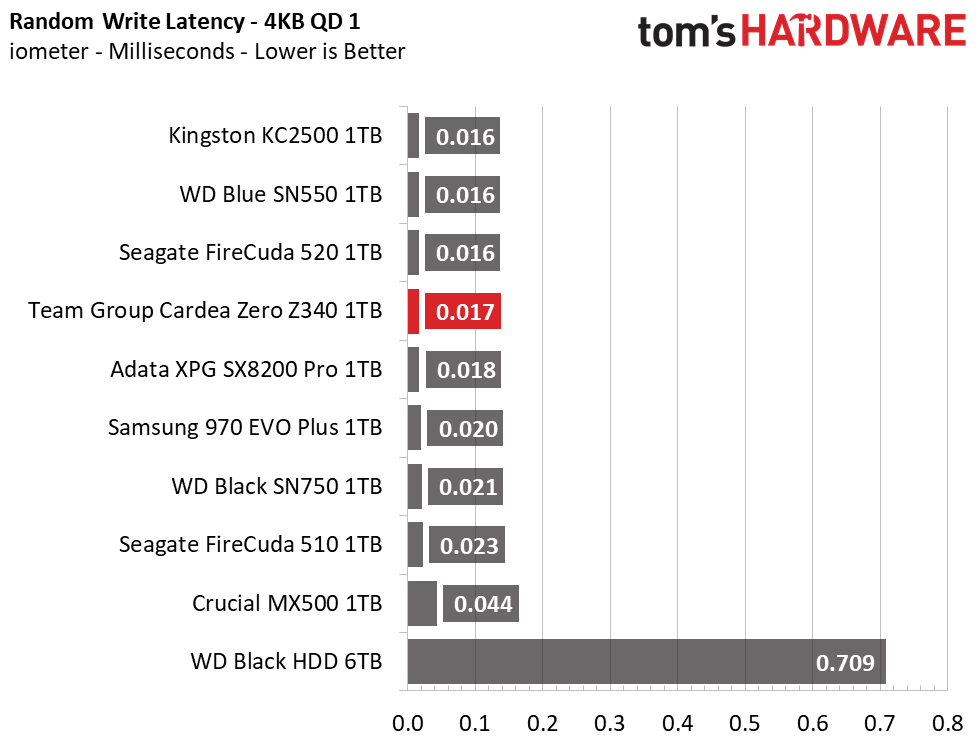

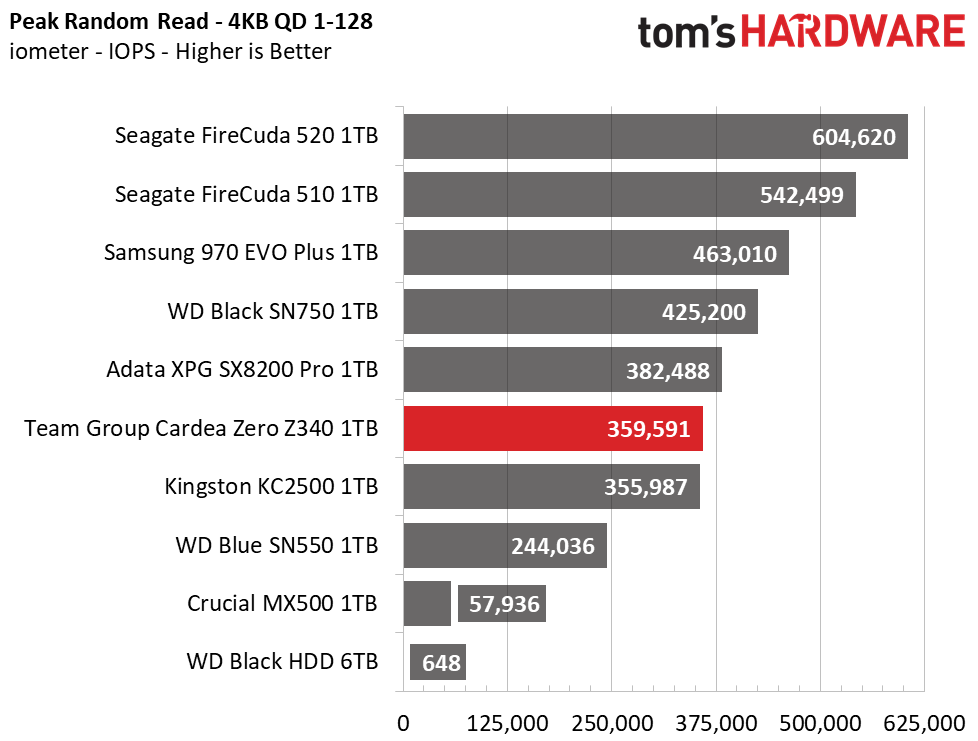
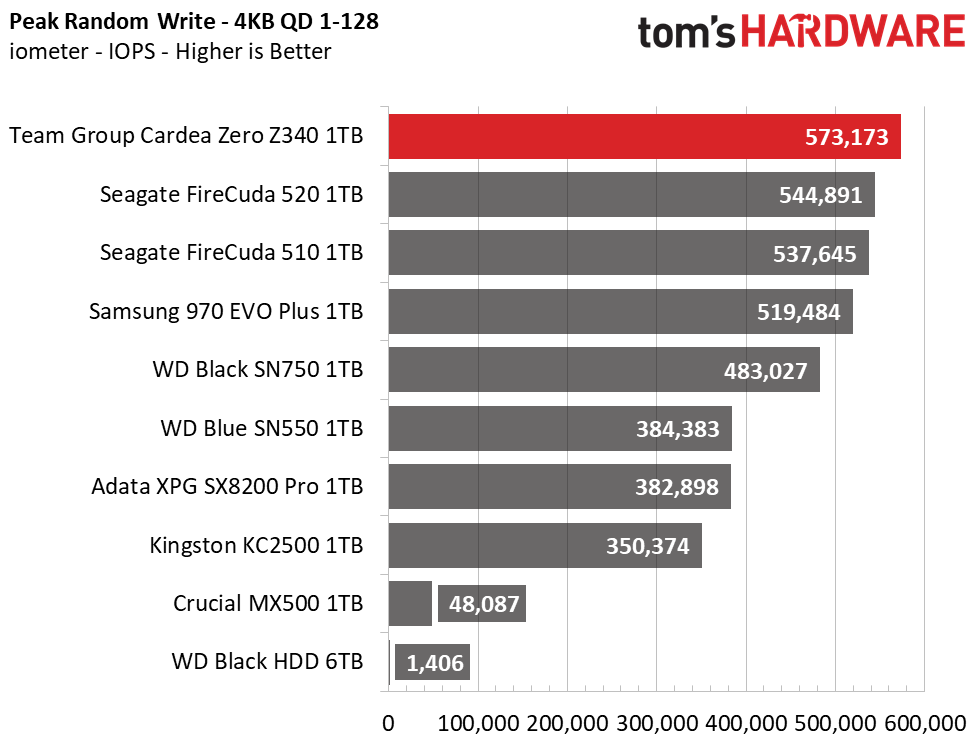
In ATTO, we tested Team Group’s T-Force Cardea Zero Z340 at a QD of 1, representing most day to day file access at various block sizes. Overall, it shows strong results as the file sizes ramp up. However, there is a dip in read performance at the 512KB file size, similar to the Seagate FireCuda 510 and WD Blue SN550. Peak sequential performance measured in at 3,476/2,994 MBps read/write and with its Micron 96L TLC, its random responsiveness is up there with some of the fastest drives, too. At QD1 its random latency measures just 0.066/0.17 ms read/write, significantly faster than the Seagate FireCuda 510. It even hits the highest peak random performance out of the test pool, managing 573,000 IOPS write when hammered.
Sustained Write Performance and Cache Recovery
Official write specifications are only part of the performance picture. Most SSD makers implement a write cache, which is a fast area of (usually) pseudo-SLC programmed flash that absorbs incoming data. Sustained write speeds can suffer tremendously once the workload spills outside of the cache and into the "native" TLC or QLC flash. We use iometer to hammer the SSD with sequential writes for 15 minutes to measure both the size of the write cache and performance after the cache is saturated. We also monitor cache recovery via multiple idle rounds.
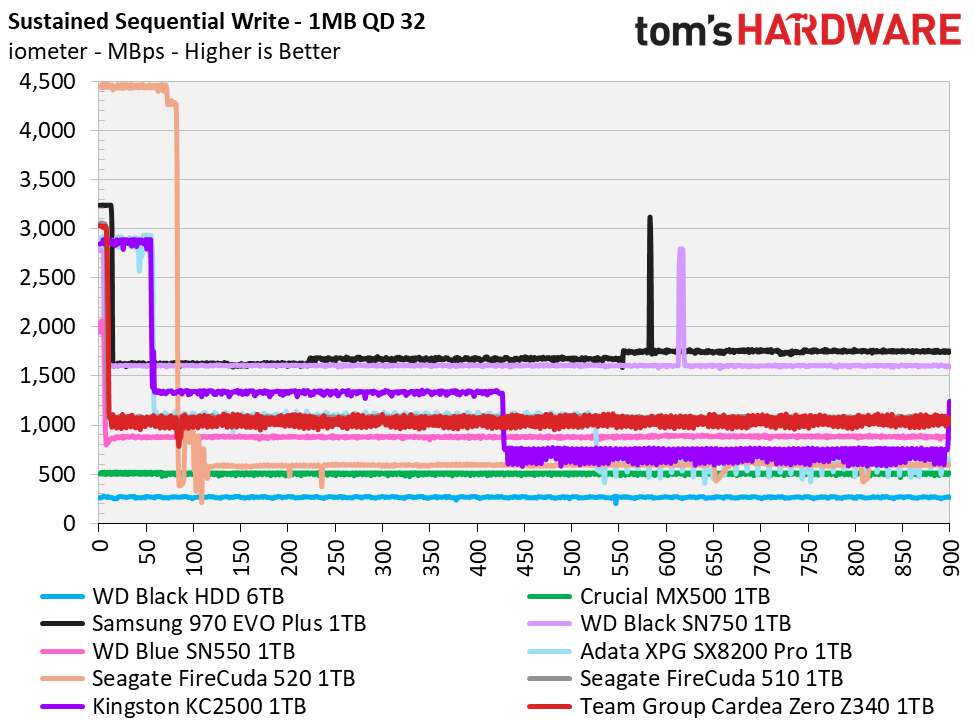
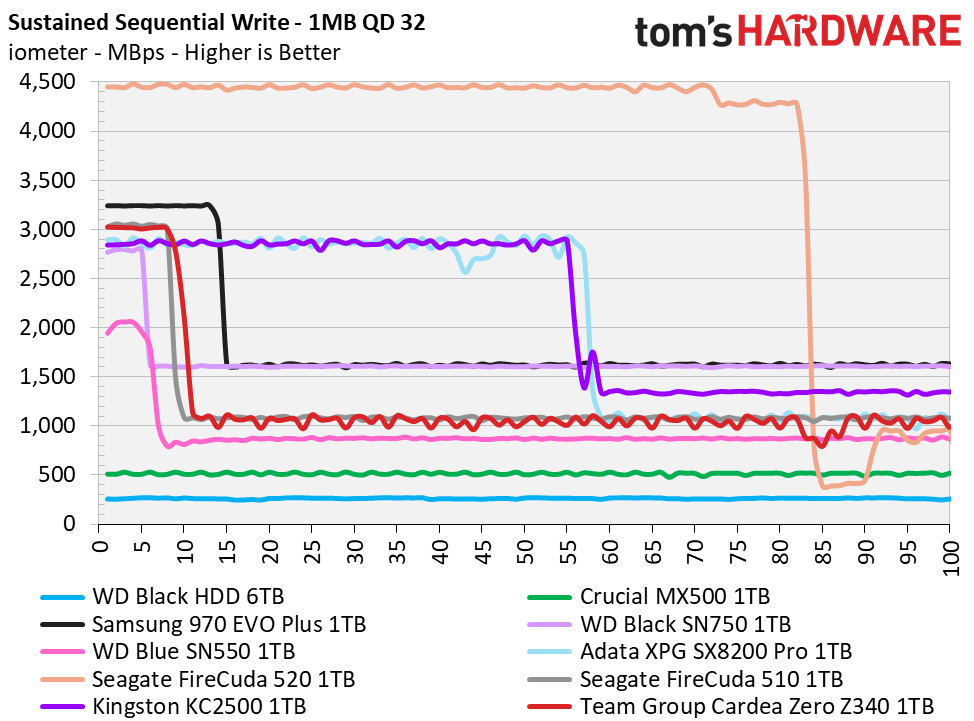
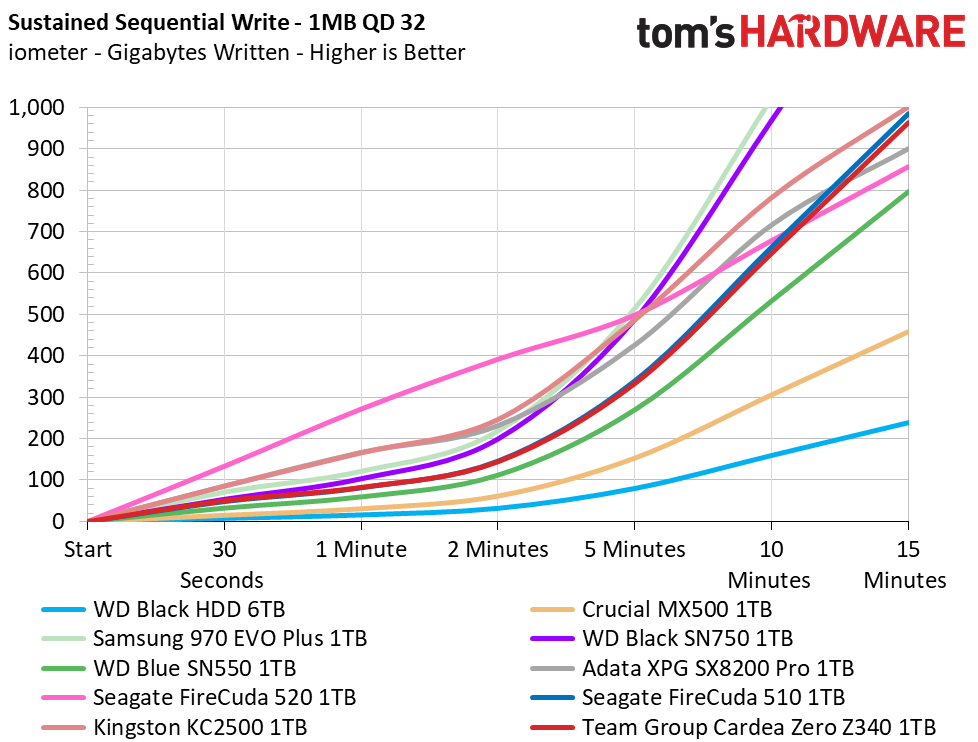
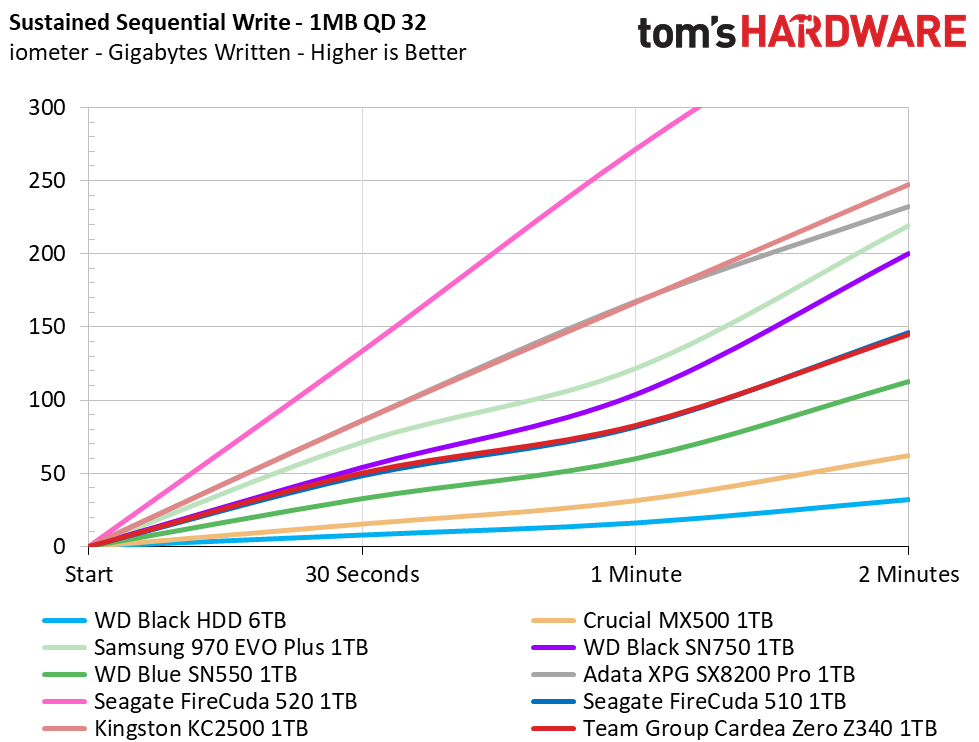
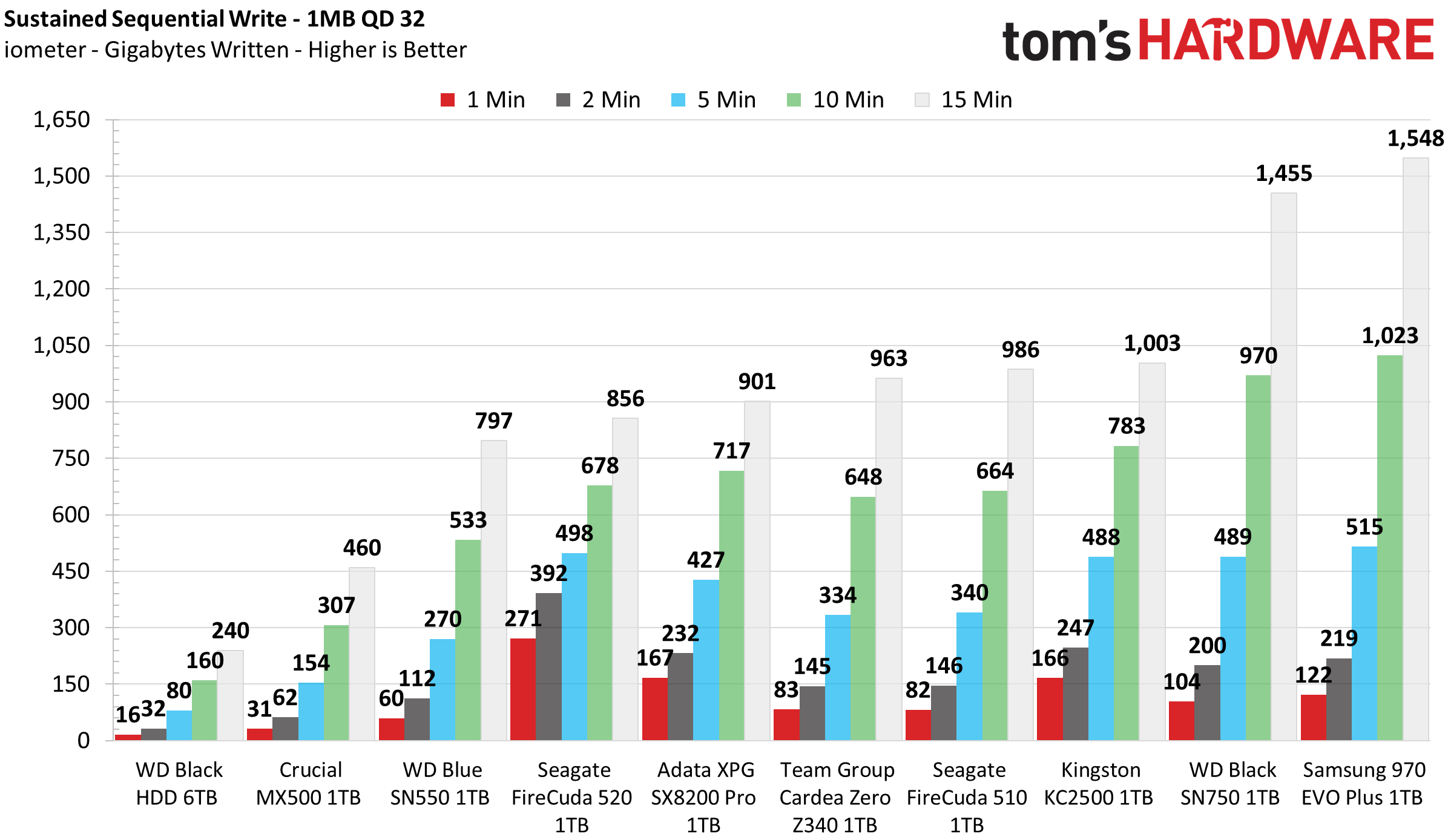
Thanks to its quad-core architecture, Phison’s E12S’s co-processors aid the Cortex R5s in NAND management routines. And under heavy write workloads, they help to ensure consistent write performance until the drive is full. Team Group’s Cardea Zero Z340’s performance lands it in the middle of the pack in this 15-minute write tests. And, as mentioned previously, it features a 28GB SLC write cache that degrades from 3 GBps down to roughly 1,050 MBps once it is saturated. While more responsive in most consumer read workloads, without the aid of dual co-processing the E12S features, the Silicon Motion SM2263EN-powered SSDs degrade to even lower lows after the 650-670GB of writes mark. Additionally, the SLC write cache recovers quickly at a rate of 16GB per 30 seconds of idle time.
Power Consumption and Temperature
We use the Quarch HD Programmable Power Module to gain a deeper understanding of power characteristics. Idle power consumption is an important aspect to consider, especially if you're looking for a laptop upgrade. Some SSDs can consume watts of power at idle while better-suited ones sip just milliwatts. Average workload power consumption and max consumption are two other aspects of power consumption, but performance-per-watt is more important. A drive might consume more power during any given workload, but accomplishing a task faster allows the drive to drop into an idle state faster, which ultimately saves power.
When possible, we also log the temperature of the drive via the S.M.A.R.T. data to see when (or if) thermal throttling kicks in and how it impacts performance. Bear in mind that results will vary based on the workload and ambient air temperature.
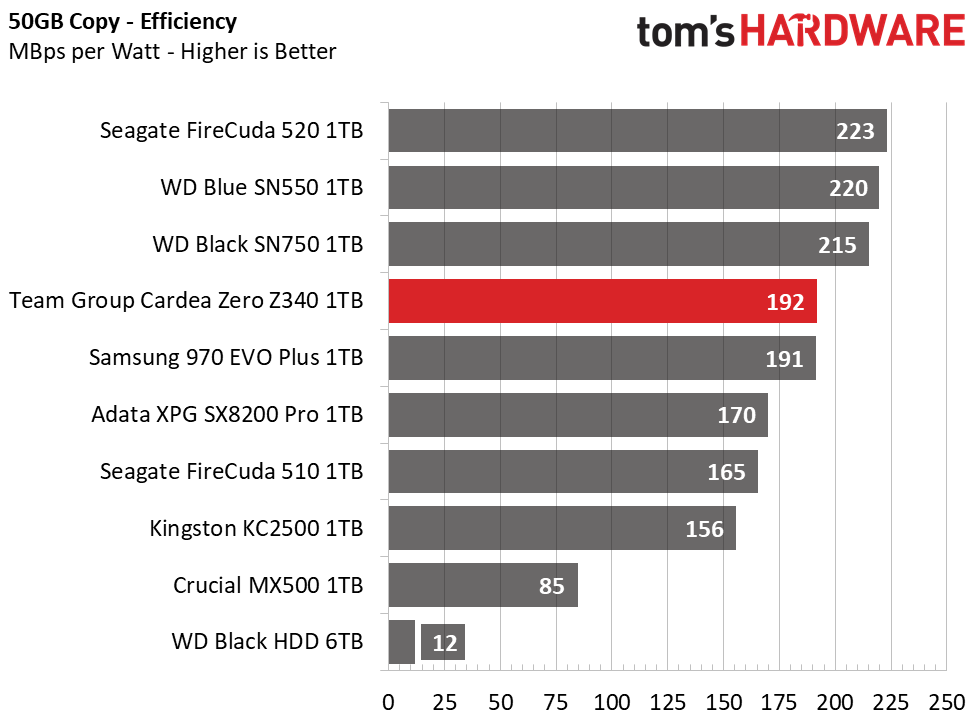
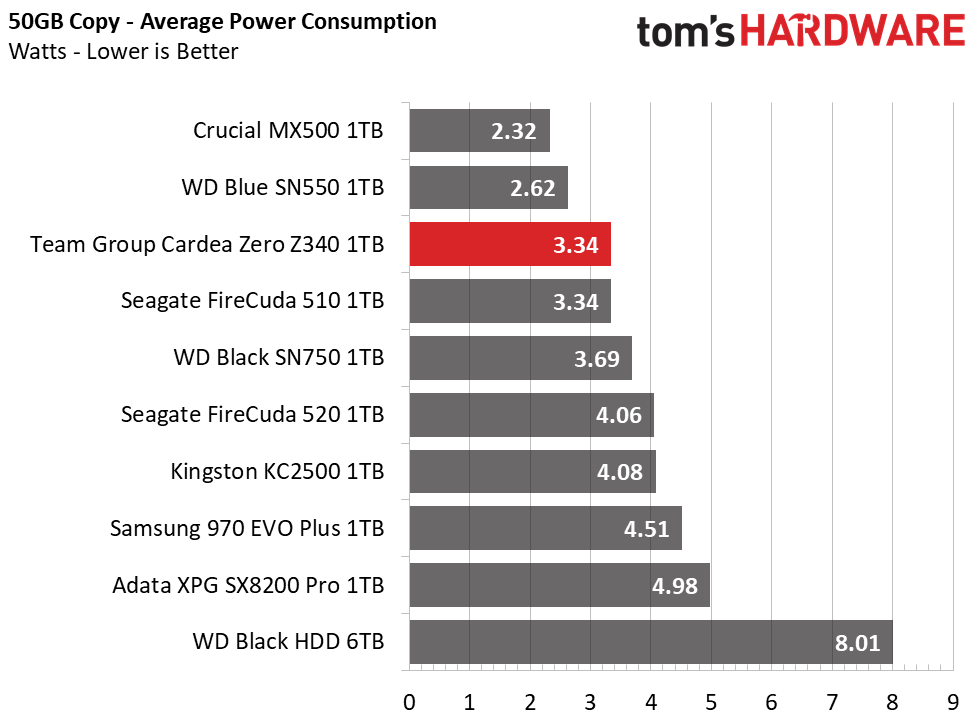
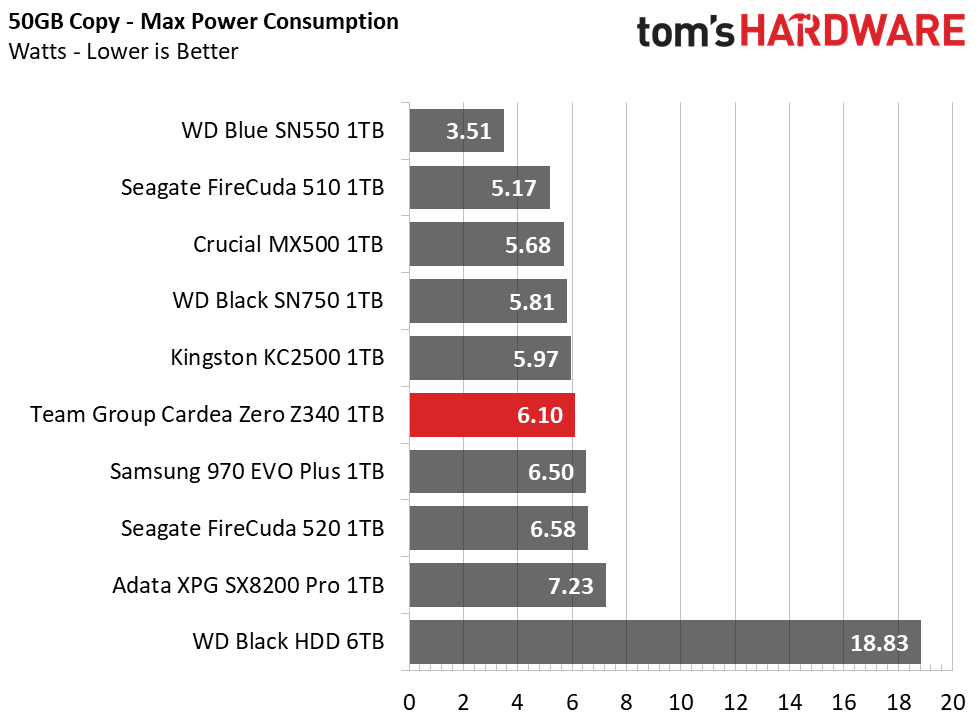
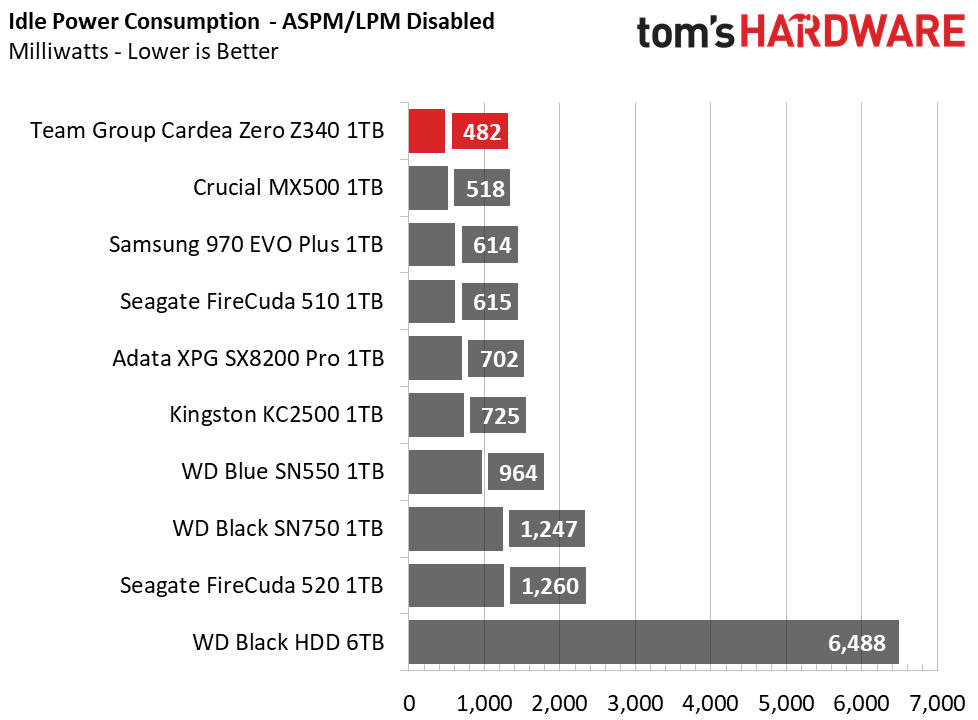
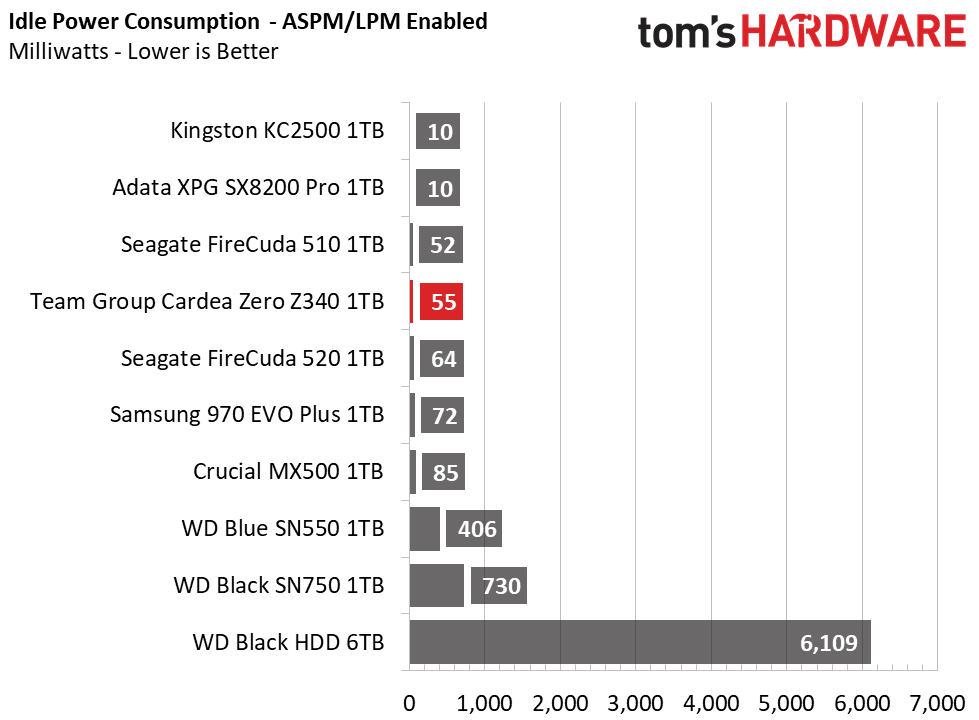
While hardware component operating speeds are up on this SSD, power consumption follows the same trend. Team Group’s Cardea Zero Z340 isn’t the most efficient SSD going, but is more efficient than the SM2262EN in our 50GB file folder copy tests. It ties with Samsung’s 970 EVO Plus, but falls a bit behind the WD Black SN750. Max power consumption during the 50GB transfer peaked at roughly a watt higher than the older E12 and Kioxia 64L TLC combo on the Seagate FireCuda 510. And idle power consumption is low, especially with ASPM disabled. However, it is not quite as low as what Silicon Motion’s controllers can achieve when ASPM is enabled.
Team Group’s Cardea Zero Z340 maintained acceptable performance as well as reasonable temperatures when transferring around 300-400GB of data to and from the drive. The E12S will start to throttle around 75-80 degrees Celsius, but the S.M.A.R.T data reported a maximum controller temperature of 69 degrees Celsius, and peak temps of 71 degrees Celsius were recorded with an IR thermometer, without any airflow. Therefore, in most situations, the copper-and-graphene heat spreader will help keep the device from thermal throttling.
MORE: Best SSDs
MORE: How We Test HDDs And SSDs
MORE: All SSD Content

Sean is a Contributing Editor at Tom’s Hardware US, covering storage hardware.
-
spentshells With no loyalty to brands, I am glad to see team group getting more widely supported. Quality products and very reasonable pricing.Reply -
oGudNite One of the first manufacturers to go against the gain and switch things up a bit... spell correction had fun againReply -
Takx Hey There, did you guys test this SSD with linux?Reply
I'm trying it on Ubuntu 20.04, and the write speed is super slow (1100 MB/s using XFS tried with Disks application on Ubuntu and FIO), on Windows (NTFS) it reached 3000 MB/s like advertised.
I don't know if this is a kernel issue or what, someone has any advice?
